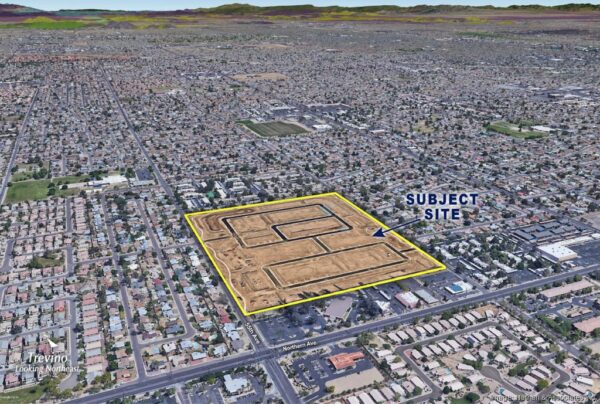 By Charles McConnell | Cronkite News
By Charles McConnell | Cronkite News
With more than a year until the election, congressional candidates in Arizona have already spent $5.5 million on their campaigns – for everything from consultants to coffee mugs, according to the latest Federal Election Commission filings.
Political experts were not surprised by the number, a symptom of what they call the “new normal” of constant campaigning in which there is no lull in the cycle of raising and spending election funds.
“Gathering funds is the new early campaign exercise,” said Kevin DeMenna, a political consultant in Arizona. “But (it’s) exponentially greater than in the past.”
Specific numbers are difficult to come by: The FEC does not have standardized expense descriptions, leaving candidates to determine how to describe their own expenses. That led to 456 different types of spending descriptions for Arizona alone, many overlapping.
But an analysis of spending reports for the quarter that ended Sept. 30, showed several broad categories.
The biggest expenses were for consulting, where candidates had spent more than $962,000, a number that experts expect will only go up as the election approaches.
“You do need to gear up ahead of time and start hiring consultants,” said Candice Nelson, a professor of government at American University.
Consulting expenditures overlapped with several other areas in the reports, including fundraising, which accounted for about $315,000 so far this year.
“In Congress, they never stop running essentially and it is common for congresspersons to always retain someone to assist them with fundraising,” said Barbara Lubin, a spokeswoman for the Arizona Democratic Party.
Other large categories of spending went toward the typical costs of running a business, with Arizona congressional candidates spending about $210,000 in travel-related expenses and an estimated $840,000 on mail, postage and printing, for example.
Those are expenses that were reported through the third quarter for House races but only through June for Senate campaigns, whose third-quarter reports are still being processed by the FEC.
Josh Stewart, a spokesman for the government watchdog Sunlight Foundation in Washington, said it’s not unusual to see campaigns start spending this far in advance of an election.
“For some of the battleground seats … it’s normal for candidates to be investing in polling (and) grass-roots infrastructure,” Stewart said.
And candidates are trying to grow those grass roots with a variety of campaign tchotchkes – Rep. Kyrsten Sinema, D-Phoenix, reported spending $987 on coffee mugs, for example, while Rep. Raul Grijalva, D-Tucson, reported $1,740 in campaign T-shirt expenses.
DeMenna said the need to constantly campaign applies not only to incumbents in swing districts, but also to those in districts that are considered safe for re-election
“It’s effectively a 24/7, 365-days-a-year, message-management effort,” DeMenna said, especially for the incumbents.
For those in safe seats, campaigning “is a long-term exercise,” DeMenna said, while freshmen like Rep. Ruben Gallego, D-Phoenix, and Rep. Martha McSally, R-Tucson, are “focused on accumulating resources to become comfortable incumbents.”
Constant campaigning and fundraising doesn’t necessarily mean constant spending, however. Democrat Matthew Heinz, who reported raising just under $204,000 for a run against McSally, is focused on spending as little as possible for the time being, a spokesman said.
“You are trying to save that money for when voters are paying attention next summer or next fall,” said Bill Scheel of Heinz’s campaign.
McSally reported raising $2.5 million and spending $1.3 million through the third quarter, the highest totals for Arizona House candidates and among the highest nationally. Scheel said that in an effort to keep its “burn rate” low, Heinz’s campaign has only spent about $29,000, or about 14 percent of total receipts.
Grijalva, who admitted he is “not that good of a fundraiser,” said his campaign tries to spend primarily on fieldwork.
“My campaign’s job is to get information into people’s hands – via mail, phone, door-to-door – and we’ve always concentrated (on) that,” Grijalva said. “It works for us. It’s not glamorous – it’s more sweat equity than anything else.”
Grijalva, who is currently running unchallenged, also said his campaign is waiting to see who the opponent is, so it can react accordingly. For now, however, he said it is focused on tucking away enough money to launch a media campaign if needed.
As the 2016 election draws closer, Lubin said media expenses will be the highest as candidates try to push their message out through radio and television advertisements.
Stewart said the ingredients are there for a potentially very expensive election cycle in Arizona this year: In addition to it being a presidential election, there is an open seat in the 1st District and the possibility of competitive races for Senate and for McSally’s seat.
“Arizona is poised to have an unprecedented amount of political spending,” he said.
Dollars for democracy
The largest categories of campaign spending, from an analysis of the $5.5 million total spent by Arizona congressional candidates so far on 2016 elections. Numbers are approximate:
Consulting: $962,000
Mail/postage/print: $840,000
Payroll/salary: $365,000
Travel: $210,000
Catering/food/bev.: $206,000
Contribution/refunds: $197,000
Taxes: $170,000
Web-related costs: $159,000
Loan repayments: $155,000












